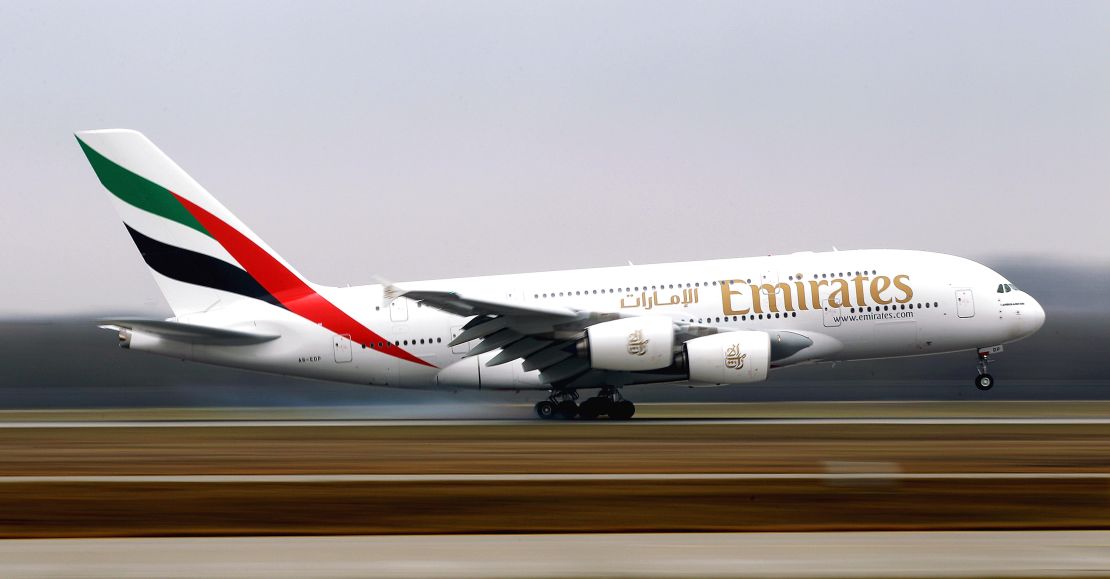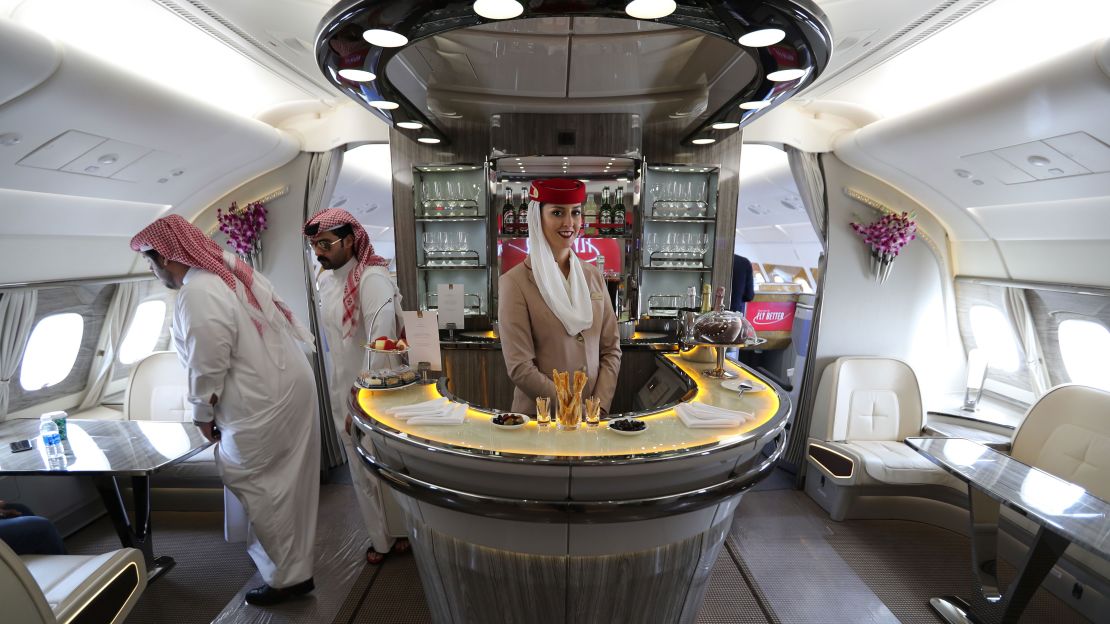A whopping great beast of an aircraft, the double-decker Airbus A380 – the biggest passenger airplane the world has ever known – is an incredible sight whether on land or in the air.
Such gravity-defying proportions combined with the genuinely enjoyable experience of flying in one have won it legions of admirers since its first commercial voyage in 2007.
So it was no surprise that there was widespread consternation at the February 14 announcement that Airbus intends to cease production of the A380 in 2019, effectively placing an expiry date on an aircraft that was once seen as the future of aviation.
But how quickly are A380s going to vanish from our skies? Is widespread affection for the huge aircraft enough to keep it flying well into its dotage, in the way many classic planes continue flying well beyond their service life?
Commercially, the superjumbo’s days are clearly numbered. Airbus’s announcement follows the cancellation of several orders by key airlines despite a decade of efforts by the aircraft’s manufacturer to persuade them the aircraft was part of a new revolution in air travel.
That said, with Airbus continuing to offer mechanical support, the A380 potentially has many more years of flying ahead of it. Such modern machines typically have a lifespan of at least two decades, meaning we could still be boarding them in the 2040s, maybe even later.
Heading for the bone yard
The best A380 superjumbo routes and airlines to experience
But some experts believe it could be heading off to the bone yard far sooner. In death, as well as life the A380 seems doomed to an ignominious fate.
You wouldn’t think that from the initial reaction to news of its demise.
“A very sad day for an amazing aircraft which pilots & passengers love,” wrote British Airways pilot Dave Wallsworth, who regularly blogs about his experiences helming the airplane.
“It is absolutely sad,” says CNN anchor and aviation expert Richard Quest. “I covered this from the days when it was still a project known as the A3XX and even before that, right through to its maiden flight and entry into service.
The reason for such affection is partly down to size. The flying leviathan’s hulking presence would, in its early days, draw crowds of spectators to airfields. Pilots of other airplanes would deliberately slow down while taxiing to give their passengers a better drive-by gawp.
‘An amazing plane’

At 79.75 meters, the A380’s wingspan is only beaten by the Antonov An-225 Mriya, the world’s largest aircraft by weight, length and wingspan. It can hold up to 853 passengers in a single-class economy configuration, although most of its operators opt for a more spacious 450 to 500 passenger layout.
“From a purely technological point, everyone agreed this was an amazing plane,” says CNN’s Quest. “When they designed it, they could require changes to jetways and to terminals, they could require changes to taxiways to allow two planes to pass each other, but they couldn’t require larger runways.
“Instead, they had to build a plane that could take off on length of about 10,000 feet or 3,000 meters. So they did it by use of the wings and the engines, an incredible achievement.”
And then there’s the experience of actually flying in an A380.
“It is an exceptionally quiet plane,” says Quest. “I flew recently sitting on the upper deck, behind the wings and those huge engines, and you could hold a normal conversation. There was virtually no noise.
The promise of greater luxury in the sky was one of the great selling points of the A380 for fliers more used to the cramped conditions of smaller aircraft or tight seating configurations even in bigger machines like the Boeing 747.
Ironically, the 747 – the original jumbo – first flew 50 years ago this month, February 1969. For decades it helped make international air travel available to more people than perhaps any other airliner.
Nonetheless it’s still in production, as Boeing cranks out the 747-8 model in modest numbers while major airlines have been phasing 747s out of service. It’s remarkable that the 747’s production life will outlive the A380s – perhaps adding more truth to the argument that making a superjumbo was an old-fashioned idea to begin with.
Flying in the lap of luxury

When the A380 launched in 2007, there was talk of marketing it to high rollers by installing onboard casinos and double bed suites, such was the amount of available space. While Virgin founder Richard Branson later backtracked on the casino idea, double beds have been installed on many planes.
Some carriers used it to set the gold standard for their first class offerings, with Singapore Airlines, the A380’s launch partner, pioneering its award-winning hotel-suite style accommodation on its superjumbos.
Gulf carrier Etihad is among airlines offering an onboard shower to first class A380, passengers, as well as an exclusive premium concept known as “The Residence” an entire apartment located in the corner of the upper deck, replete with a living room, double bedroom, ensuite shower and its own dedicated butler.
“To build such an extravagance into a commercial passenger jet just shows how much space airlines have to play with on these aircraft,” says CNN Travel’s global editor Barry Neild, who toured a “Residence” during a 2017 flight from London to Abu Dhabi.
But who flies in such opulence? According to airline staff it’s a combination of the super rich and aviation fanatics seeking the best experiences they can find in the sky, sometimes cashing in stockpiles of air miles to ride in style.
Naked at 40,000 feet
Inevitably for a UAE-based carrier, a lot of the custom comes from the country’s wealthy royalty.
“The butler on the aircraft I flew in told me that some sheiks prefer The Residence to their own private jets,” Neild adds. “Sometimes they’ll have their private jet follow on behind, so they can enjoy the comfort of long haul on the A380, and the convenience of their own plane for short hops at their destination.”
And is it worth it?
“I was given permission to take a shower in the residence during the journey,” says Neild. “Apart from the dubious bragging rights to being naked on a plane at 40,000 feet, it was a whole new level of airplane comfort that instantly blitzes the weariness of red-eye flight.
“It’s somewhat depressing to go back to economy class on a normal airplane after trying something like that.”
A victim of fashion

Airports too, bought into the A380 vision as experts conjured up a future in which air travel congestion would be eased by large airplanes ferrying passengers between major hubs like London, Dubai or Atlanta, where they’d then connect to short-haul flights on smaller jets.
Gates, sometimes entire terminals were reconfigured to accommodate the bigger planes.
However, despite huge rises in the number of people traveling by air – and the continued rise of airport superhubs – things haven’t quite turned out the way many imagined.
As with Concorde before it, the A380’s problem is one of economics. Had airlines been able to fill every flight to capacity, it would’ve been a success story – carrying more people at lower per-passenger cost.
“It’s always easy to be wise in retrospect, but Airbus’s gamble on the A380 went horribly wrong,” says Murdo Morrison, head of strategic content at aviation intelligence specialist FlightGlobal.
“The strategy of most airlines demanded smaller, more efficient widebodies that they could operate point-to-point on more frequent schedules,”
Instead, airlines shifted their interest to lighter, more fuel-efficient passenger jets, meaning that as of 2019, Airbus has sold less than a quarter of the 1,200 A380s it predicted it would sell.
Airbus’ A350 and Boeing’s 787 Dreamliner have already proved this. And the upcoming Boeing 777-9 will seat more than 400 passengers – thanks to the addition of huge, lightweight carbon fiber wings, hastening the A380s demise.
‘Too bloody big’
“Airbus has spent the last decade and a half trying to convince skeptical airlines and the media that the A380’s moment is nigh,” said Morrison. “In the end, simple economics won out.”
So how long with the A380 keep flying? Despite the decades of service life left in newer models, that future could again be determined by economics. Already the first superjumbos have reportedly been decommissioned and earmarked for salvage.
FlightGlobal’s Morrison says that with little demand in the secondhand market the lifespan of the giant plane will be shorter than smaller models.
“The early customers of the aircraft, Emirates included, have already made plans to retire their oldest A380s,” he said. “Many more will be heading for the scrapheap throughout the 2020s.”
But will the A380 follow the trajectory enjoyed by supersonic jet Concorde, enjoying an afterlife through the veneration of its supporters?
Already one A380 has been installed in the Le Bourget Aerospace Museum near Paris, but CNN’s Quest says other airplanes are unlikely to follow.
“Concorde conjured up an aspiration, it was something that only a few could fly on but everyone wanted to fly on,” he says. “And it did something that no other aircraft did. This cannot be said of the 380.
“Instead we’ll probably end up with a giant scrapheap of 380s, unless Airbus comes up with a deal to buy them back.
“It’s certainly too bloody big for a museum.”




























